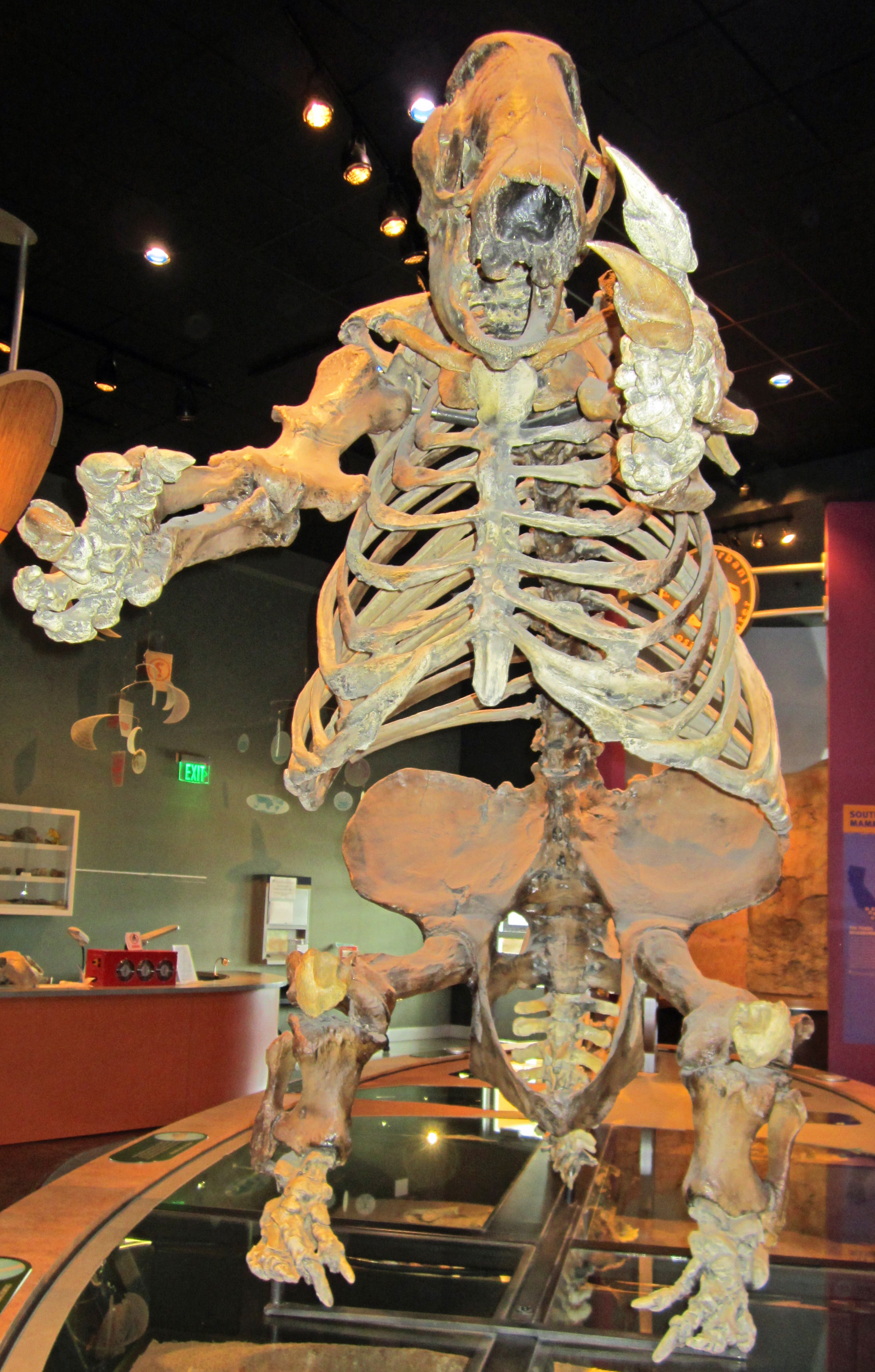 In many ways, dinosaurs and mammals are very different types of animal. And yet, there are some amazing cases of convergent evolution among them. One of the most bizarre is that of giant ground sloths and therizinosaurs. Like the little slow-moving, tree-dwelling sloths of today, giant ground sloths, like this Paramylodon mounted at Western Science Center, were herbivorous. As a group, sloths are related to armadillos and anteaters. Therizinosaurs, like this Nothronychus mounted at the Natural History Museum of Utah in Salt Lake City, are part of Maniraptora, a group of theropod dinosaurs that also includes predators like Velociraptor and our living dinosaurs, the birds. However, therizinosaurs evolved into big feathery herbivores.
In many ways, dinosaurs and mammals are very different types of animal. And yet, there are some amazing cases of convergent evolution among them. One of the most bizarre is that of giant ground sloths and therizinosaurs. Like the little slow-moving, tree-dwelling sloths of today, giant ground sloths, like this Paramylodon mounted at Western Science Center, were herbivorous. As a group, sloths are related to armadillos and anteaters. Therizinosaurs, like this Nothronychus mounted at the Natural History Museum of Utah in Salt Lake City, are part of Maniraptora, a group of theropod dinosaurs that also includes predators like Velociraptor and our living dinosaurs, the birds. However, therizinosaurs evolved into big feathery herbivores. 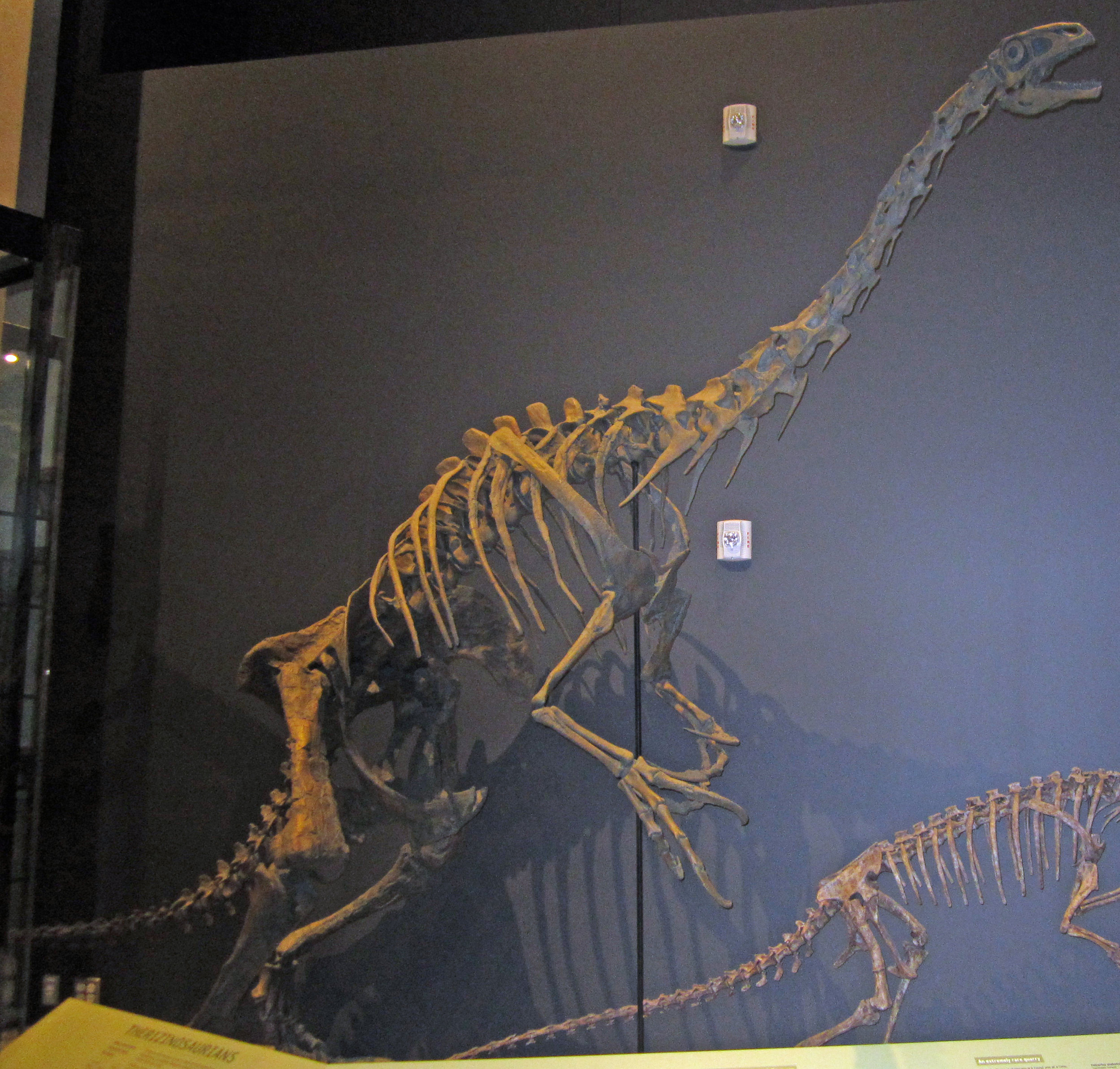 Despite their very different evolutionary origins, giant grounds sloths and therizinosaurs share some remarkable similarities: long arms ending in huge claws, wide bodies to accommodate a long digestive tract for processing plant matter, short robust legs, and short tails. Both groups evolved into large-bodied bipedal plant-eaters. Nothronychus was named in 2001 by my colleagues Jim Kirkland (Utah Geological Survey) and Doug Wolfe (Zuni Dinosaur Institute for Geosciences) - the name means "sloth claw".Another similarity is that both giant ground sloths and therizinosaurs represent migrations into North America from other places. Giant ground sloths evolved in South America and reached North America around nine million years ago. Until the discovery of 90-million-year-old Nothronychus in New Mexico, therizinosaurs were known only from fossils found in Asia. Nothronychus is closely related to the large Asian therizinosaurs and probably represents a migration event into western North America.Post by Curator Dr. Andrew McDonald
Despite their very different evolutionary origins, giant grounds sloths and therizinosaurs share some remarkable similarities: long arms ending in huge claws, wide bodies to accommodate a long digestive tract for processing plant matter, short robust legs, and short tails. Both groups evolved into large-bodied bipedal plant-eaters. Nothronychus was named in 2001 by my colleagues Jim Kirkland (Utah Geological Survey) and Doug Wolfe (Zuni Dinosaur Institute for Geosciences) - the name means "sloth claw".Another similarity is that both giant ground sloths and therizinosaurs represent migrations into North America from other places. Giant ground sloths evolved in South America and reached North America around nine million years ago. Until the discovery of 90-million-year-old Nothronychus in New Mexico, therizinosaurs were known only from fossils found in Asia. Nothronychus is closely related to the large Asian therizinosaurs and probably represents a migration event into western North America.Post by Curator Dr. Andrew McDonald
Valley of the Mastodons
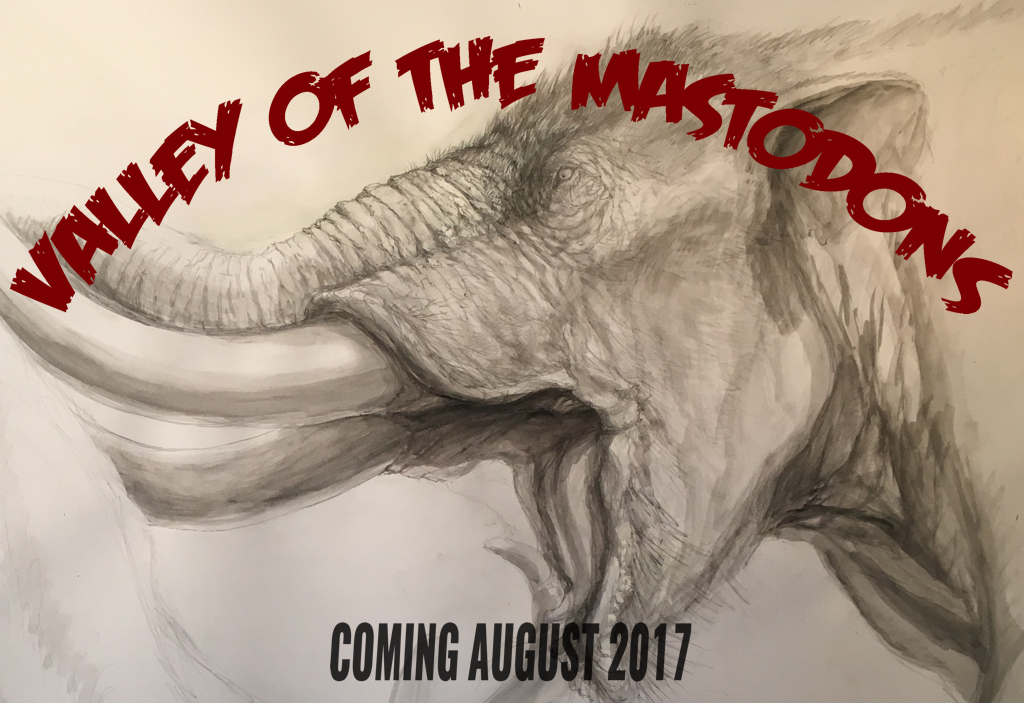 I missed doing a Fossil Friday post last week. But my reason was a good one: that was the opening day for our new exhibit, Valley of the Mastodons!Valley of the Mastodons was more than just an exhibit, however. It started with a 3-day symposium with 17 scientists and science communicators from the US and Canada examining the WSC mastodon collection, giving presentations, engaging with the public, and helping with the exhibit. Besides being what we believe to be the largest exhibit of mastodons in history, we're attempting to break new ground in making the act of research itself part of outreach, in real time.We had pretty good media exposure, with more to come:KTLA 5PLOS Paleo CommunityThe Press-EnterpriseSauropod Vertebra Picture of the WeekDontmesswithdinosaurs.comI'll have lots more to say about Valley of the Mastodons in the future, including at the Society of Vertebrate Paleontology in Calgary later this month. But for now I want to thank our sponsors and supporters Golden Village Palms RV Resort, Abbott Vascular, Bone Clones, and Brian Engh Paleoart, as well as the participants that made this event such a success! Below are bunches of pictures from the event:
I missed doing a Fossil Friday post last week. But my reason was a good one: that was the opening day for our new exhibit, Valley of the Mastodons!Valley of the Mastodons was more than just an exhibit, however. It started with a 3-day symposium with 17 scientists and science communicators from the US and Canada examining the WSC mastodon collection, giving presentations, engaging with the public, and helping with the exhibit. Besides being what we believe to be the largest exhibit of mastodons in history, we're attempting to break new ground in making the act of research itself part of outreach, in real time.We had pretty good media exposure, with more to come:KTLA 5PLOS Paleo CommunityThe Press-EnterpriseSauropod Vertebra Picture of the WeekDontmesswithdinosaurs.comI'll have lots more to say about Valley of the Mastodons in the future, including at the Society of Vertebrate Paleontology in Calgary later this month. But for now I want to thank our sponsors and supporters Golden Village Palms RV Resort, Abbott Vascular, Bone Clones, and Brian Engh Paleoart, as well as the participants that made this event such a success! Below are bunches of pictures from the event: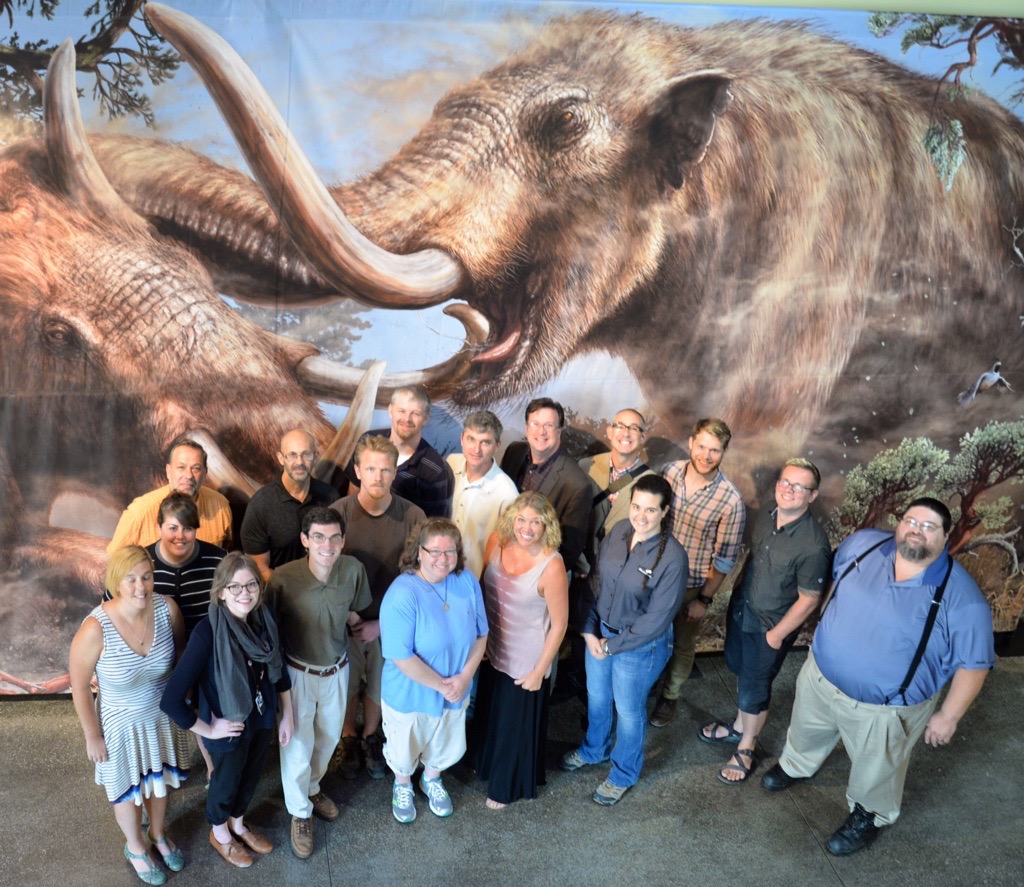
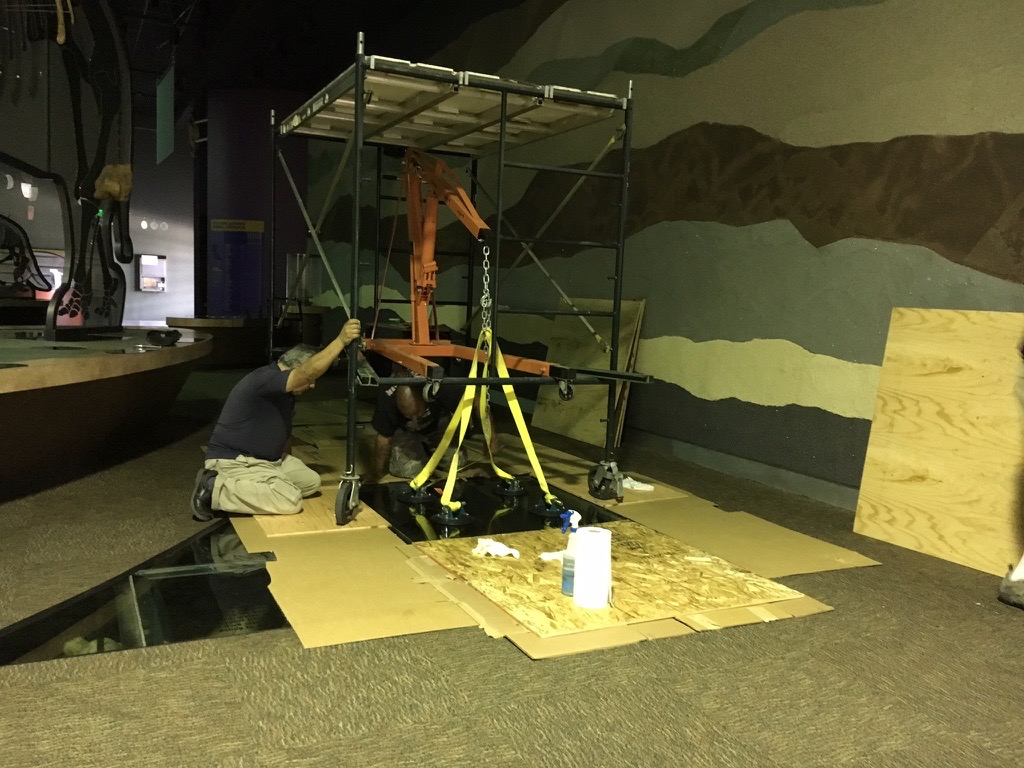
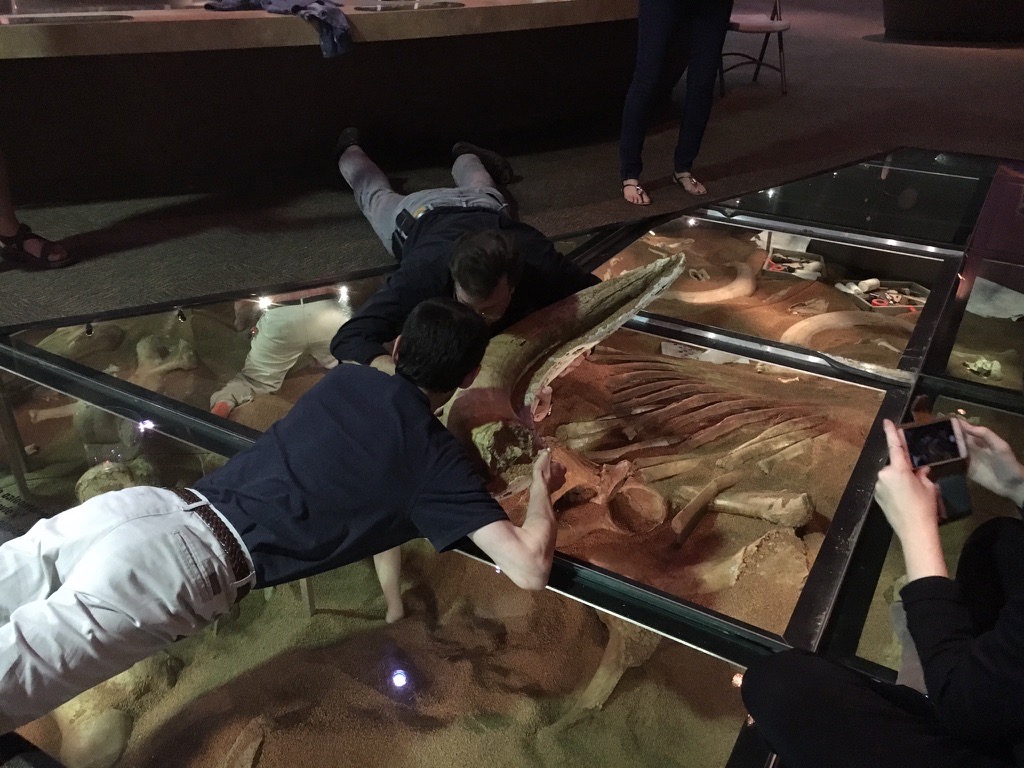
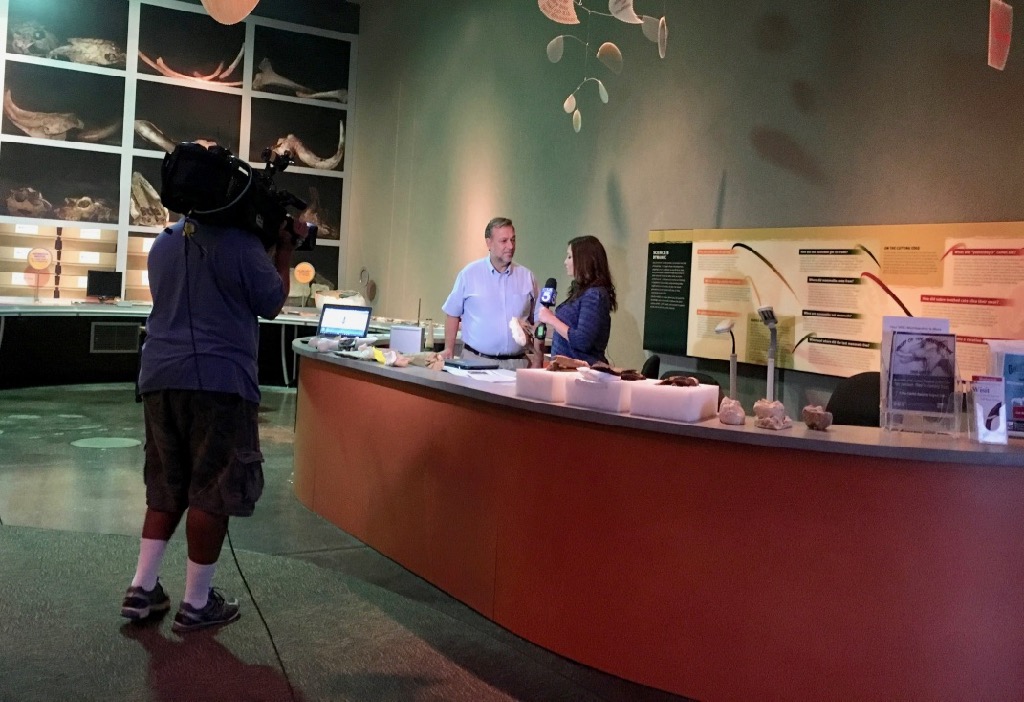
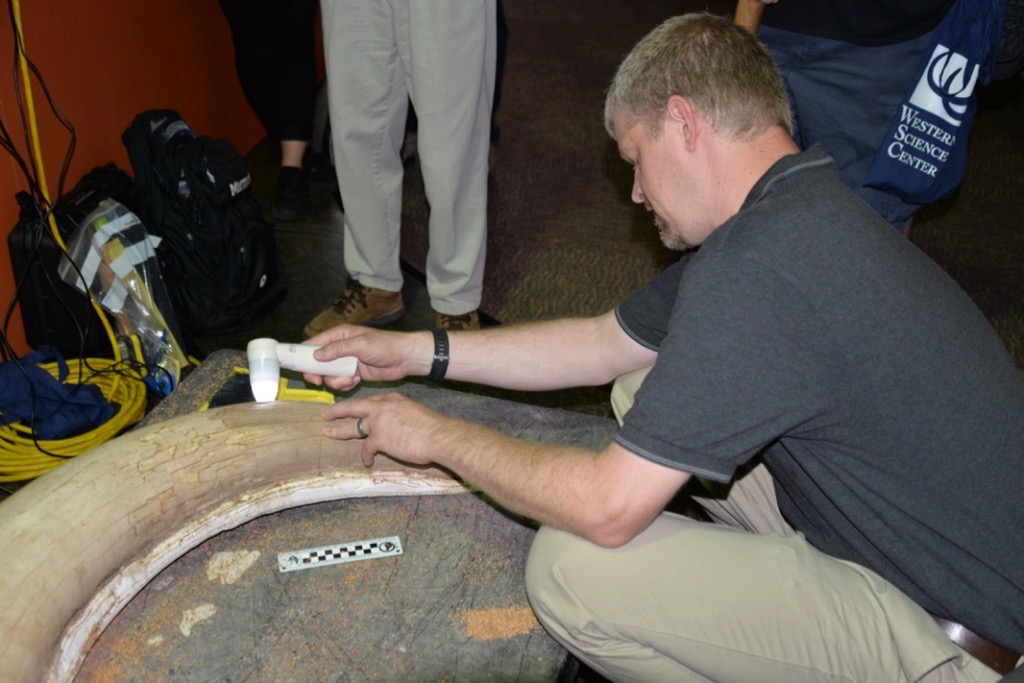

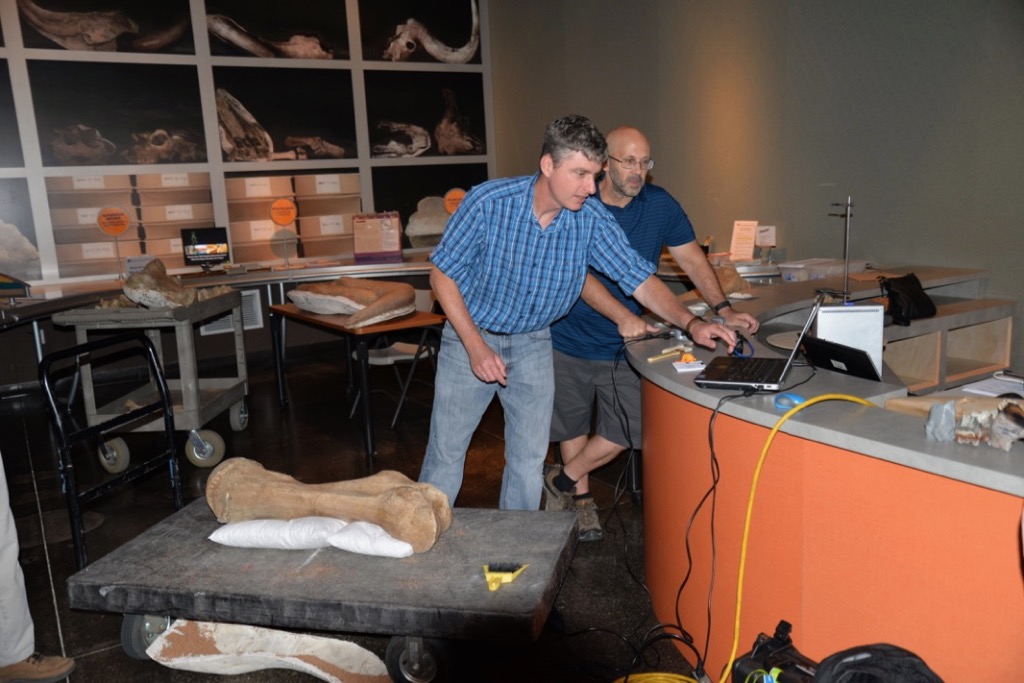
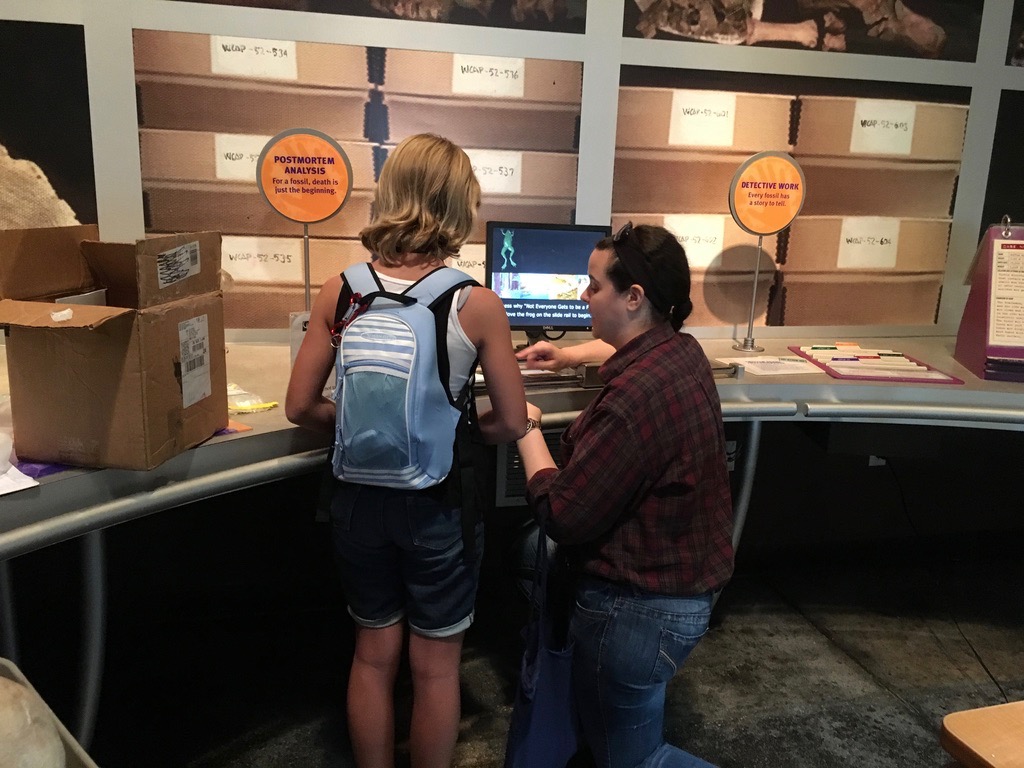
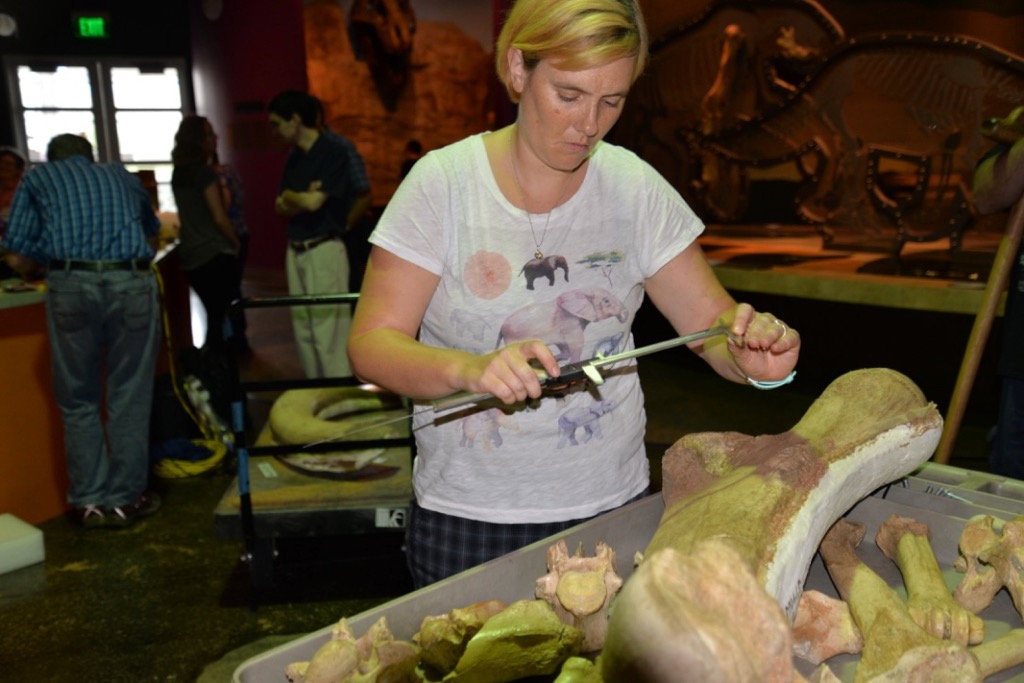
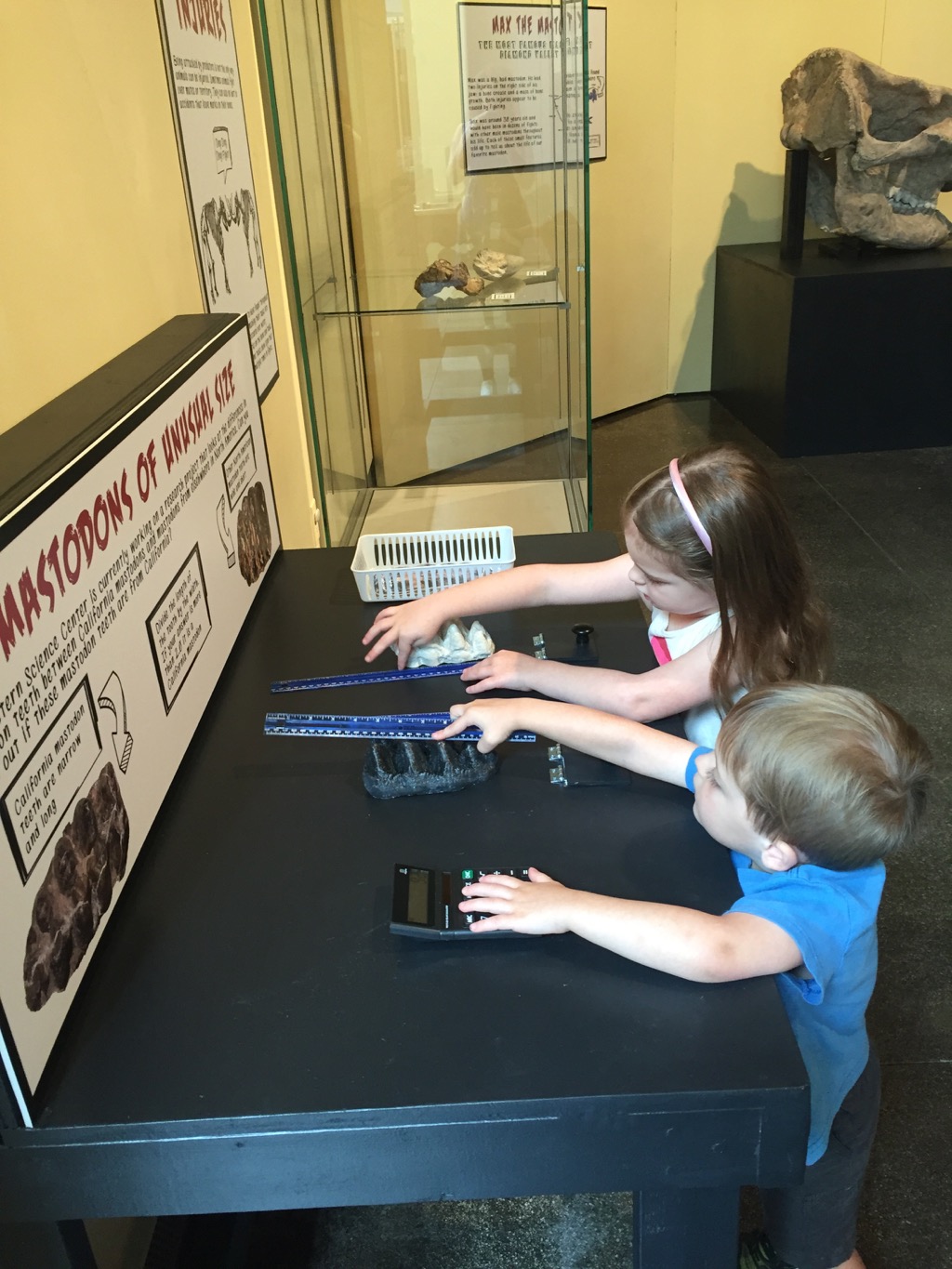

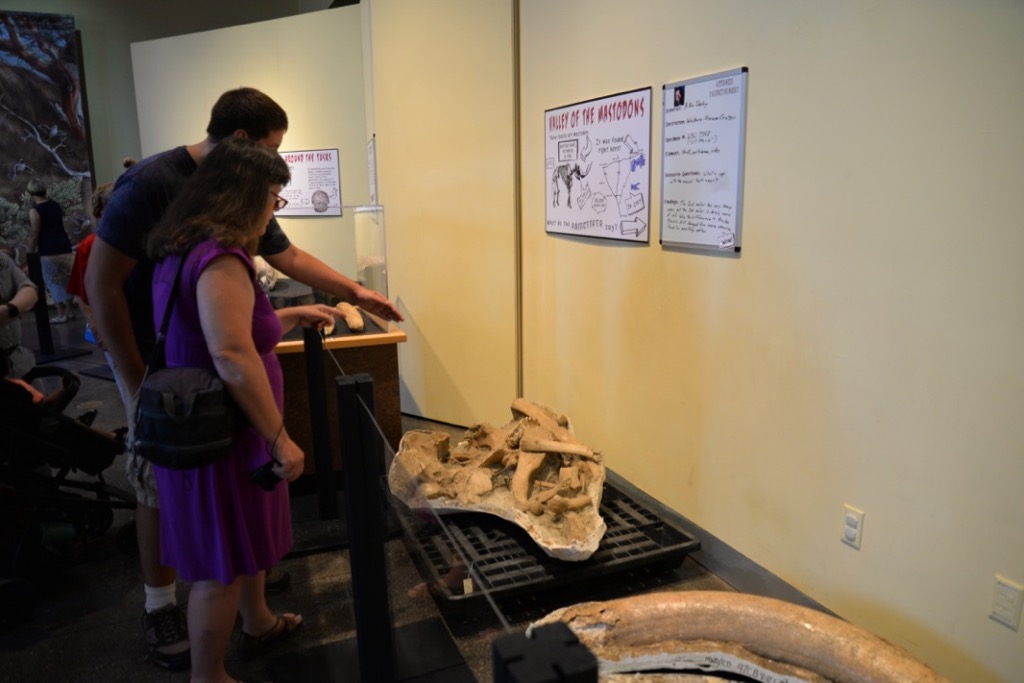
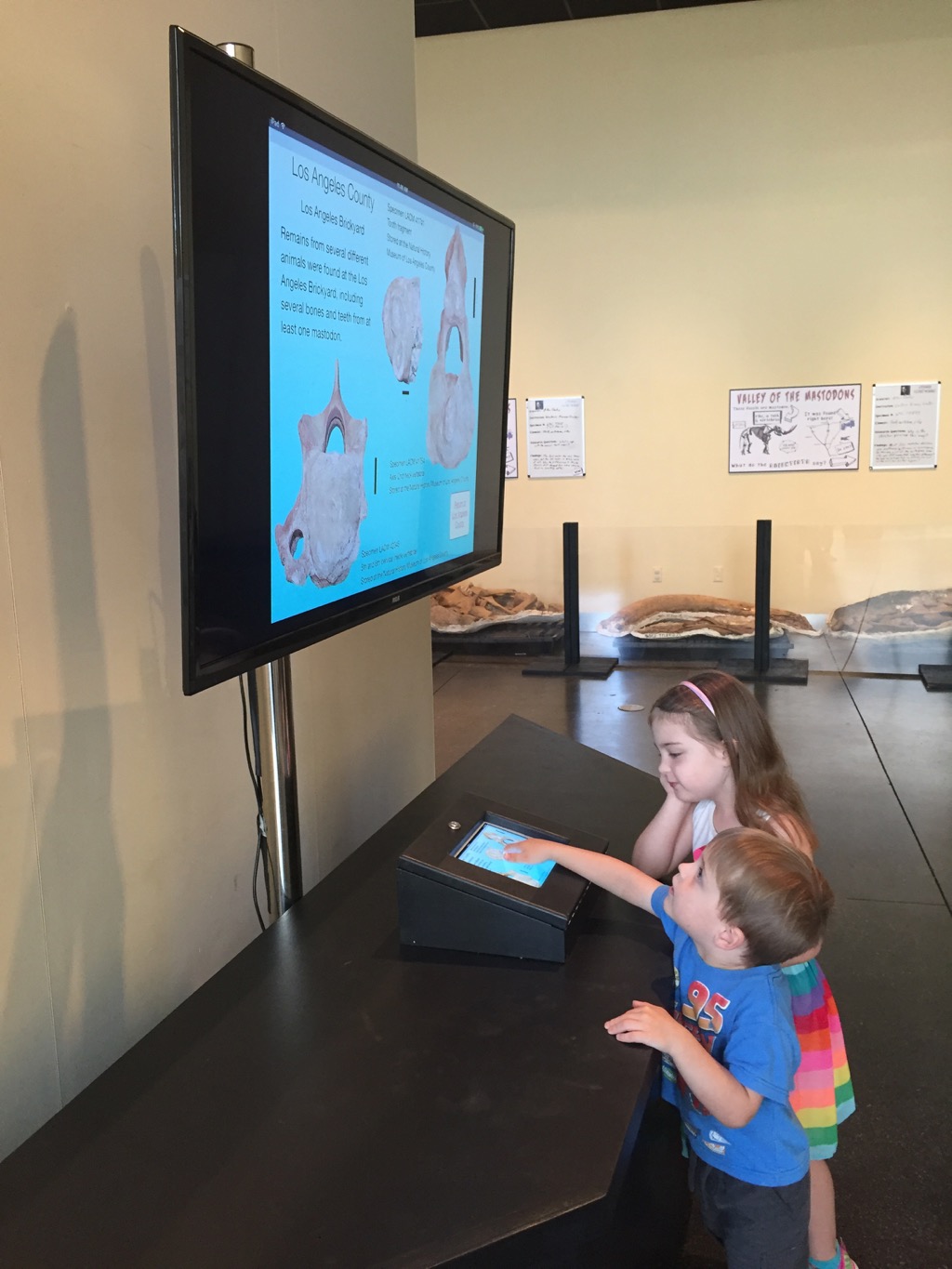
Crazy dental pathology
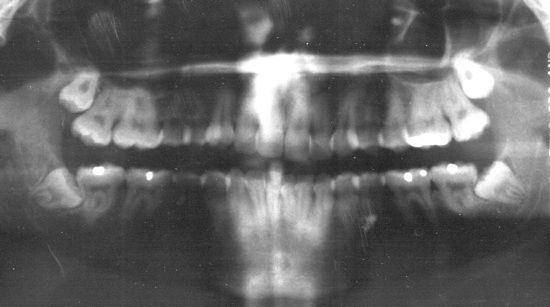 This post was originally published on my old VMNH blog, "Updates from the Paleontology Lab", on March 8, 2010. The post includes anatomical observations that are relevant to human evolution; WSC's exhibit on human origins, "Stepping Out of the Past", is open until May 21.Next week I’m attending the Geological Society of America Northeastern/Southeastern Section meeting, and I’ll be posting daily updates on that conference. Prior to leaving for the conference, I’ll be taking most of this week off. I thought an explanation for my absence is justified, especially as it involves some interesting information about mammal teeth.Nearly all mammals are strongly heterodont, meaning that they have different types of teeth in their mouths. Mammal teeth are typically divided into four groups. From the front of the mouth to the back, these are the incisors, canines, premolars, and molars, respectively abbreviated I, C, P, and M in the upper jaw, and i, c, p, and m in the lower jaw. So, for example, the second upper molar would be M2, while the second lower molar would be m2. Most mammals also have a temporary set of teeth, called milk or deciduous teeth, abbreviated with a “d” prefix (dp1 is the first lower deciduous premolar). Incidentally, some of the terms are different for humans; canines are referred to as eye teeth, premolars as bicuspids, second molars as 12-year teeth, and third molars as wisdom teeth. For some reason, there’s also a convention in humans to refer to the post-canine deciduous teeth as molars rather than as premolars. I’m not sure why this is done, except that these teeth are similar in shape to the permanent molars. They are replaced by the premolars, however, not the molars. Are there any developmental folks out there that can shed some light on this?Anyway, it turns out that tooth counts are pretty significant for determining relationships among different groups of mammals, so there’s also a notation for overall dental formulas. For example:
This post was originally published on my old VMNH blog, "Updates from the Paleontology Lab", on March 8, 2010. The post includes anatomical observations that are relevant to human evolution; WSC's exhibit on human origins, "Stepping Out of the Past", is open until May 21.Next week I’m attending the Geological Society of America Northeastern/Southeastern Section meeting, and I’ll be posting daily updates on that conference. Prior to leaving for the conference, I’ll be taking most of this week off. I thought an explanation for my absence is justified, especially as it involves some interesting information about mammal teeth.Nearly all mammals are strongly heterodont, meaning that they have different types of teeth in their mouths. Mammal teeth are typically divided into four groups. From the front of the mouth to the back, these are the incisors, canines, premolars, and molars, respectively abbreviated I, C, P, and M in the upper jaw, and i, c, p, and m in the lower jaw. So, for example, the second upper molar would be M2, while the second lower molar would be m2. Most mammals also have a temporary set of teeth, called milk or deciduous teeth, abbreviated with a “d” prefix (dp1 is the first lower deciduous premolar). Incidentally, some of the terms are different for humans; canines are referred to as eye teeth, premolars as bicuspids, second molars as 12-year teeth, and third molars as wisdom teeth. For some reason, there’s also a convention in humans to refer to the post-canine deciduous teeth as molars rather than as premolars. I’m not sure why this is done, except that these teeth are similar in shape to the permanent molars. They are replaced by the premolars, however, not the molars. Are there any developmental folks out there that can shed some light on this?Anyway, it turns out that tooth counts are pretty significant for determining relationships among different groups of mammals, so there’s also a notation for overall dental formulas. For example: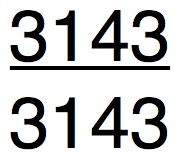 means 3 incisors, 1 canine, 4 premolars, and 3 molars in each half of the upper jaw, and the same count in each half of the lower jaw. This gives a total of 44 teeth in the mouth. This is the primitive tooth count for most placental mammal groups, but most groups have modified this number in the course of their evolution.One of the major divisions in the Order Primates is based largely on tooth counts. The Platyrrhini, or New World monkeys, have a tooth count of:
means 3 incisors, 1 canine, 4 premolars, and 3 molars in each half of the upper jaw, and the same count in each half of the lower jaw. This gives a total of 44 teeth in the mouth. This is the primitive tooth count for most placental mammal groups, but most groups have modified this number in the course of their evolution.One of the major divisions in the Order Primates is based largely on tooth counts. The Platyrrhini, or New World monkeys, have a tooth count of: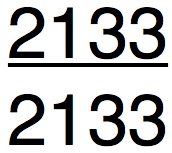 while the Catarrhini, or Old World monkeys, gibbons, and apes, have a count of:
while the Catarrhini, or Old World monkeys, gibbons, and apes, have a count of: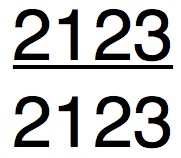 All the catarrhines share this count, going back to the Late Eocene or Early Oligocene. Here’s the Early Miocene Proconsul (specimen from AMNH):
All the catarrhines share this count, going back to the Late Eocene or Early Oligocene. Here’s the Early Miocene Proconsul (specimen from AMNH):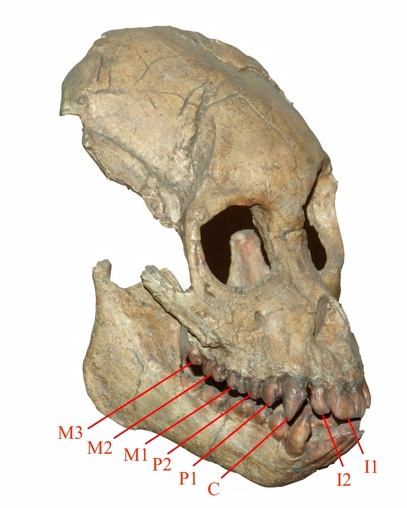 And here’s a modern Gorilla (photo taken at the Henry Doorly Zoo):
And here’s a modern Gorilla (photo taken at the Henry Doorly Zoo):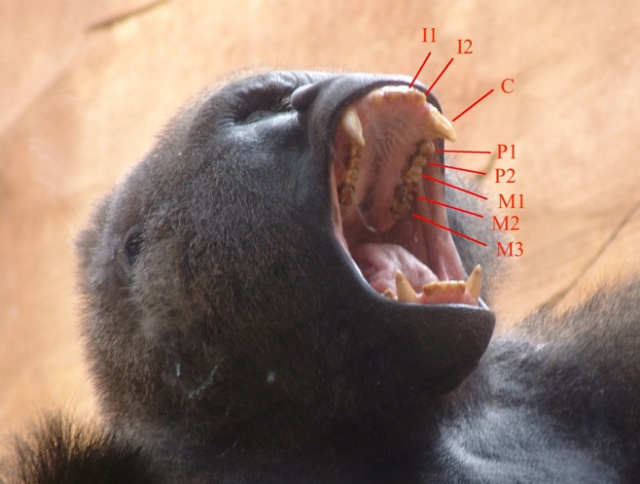 Humans, as catorrhines, have the same tooth count, as is apparent in Brett’s dental X-rays:
Humans, as catorrhines, have the same tooth count, as is apparent in Brett’s dental X-rays: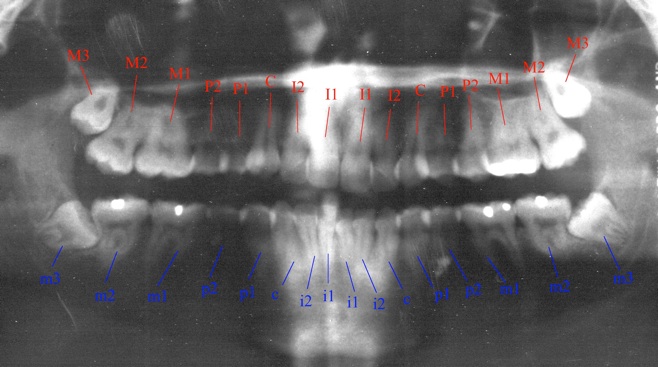 Notice, however, the unusual position of the upper and lower third molars (M3 and m3). These are the wisdom teeth, and as is commonly the case in humans, they are impacted (growing into the side of the adjacent teeth). Impacted wisdom teeth can cause pain and infection, and are often surgically removed. This is a relict of humans’ evolutionary history; as the only short-snouted catarrhines, there isn’t room in our mouths for the third molar. In fact, other dental abnormalities are fairly common in humans, probably due to the same developmental issues, which brings me to my absence from work later this week.These are my son Tim’s dental X-rays, taken just before his 12th birthday:
Notice, however, the unusual position of the upper and lower third molars (M3 and m3). These are the wisdom teeth, and as is commonly the case in humans, they are impacted (growing into the side of the adjacent teeth). Impacted wisdom teeth can cause pain and infection, and are often surgically removed. This is a relict of humans’ evolutionary history; as the only short-snouted catarrhines, there isn’t room in our mouths for the third molar. In fact, other dental abnormalities are fairly common in humans, probably due to the same developmental issues, which brings me to my absence from work later this week.These are my son Tim’s dental X-rays, taken just before his 12th birthday: There’s a lot going on in this image. The bright objects are braces, and two fillings. Here’s the same image, with the teeth labeled:
There’s a lot going on in this image. The bright objects are braces, and two fillings. Here’s the same image, with the teeth labeled: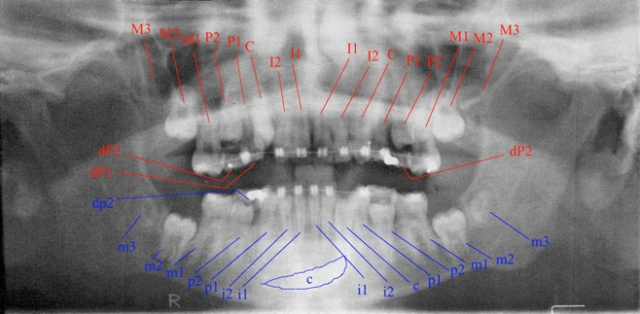 Note that the image is reversed (right is on the left). There are four or five deciduous teeth still in place (four are labeled), although the permanent teeth have formed beneath them. It’s also clear that the M2’s and m2’s (the 12-year teeth) have formed but not yet erupted, and the third molars are just starting to develop (left m3 seems a little further along than the others). There is a lot of crowding (human developmental issues, again!) that has prevented the canines from erupting normally, which is why the braces were needed.The big problem is in the middle of the lower jaw, that blue-outlined area labeled “c”. That’s the right lower canine, and it’s completely out of position. It has rotated almost 90 degrees, and is laying across the mandibular symphysis with its crown sitting underneath the left lower canine.Here’s a follow-up X-ray from 13 months later:
Note that the image is reversed (right is on the left). There are four or five deciduous teeth still in place (four are labeled), although the permanent teeth have formed beneath them. It’s also clear that the M2’s and m2’s (the 12-year teeth) have formed but not yet erupted, and the third molars are just starting to develop (left m3 seems a little further along than the others). There is a lot of crowding (human developmental issues, again!) that has prevented the canines from erupting normally, which is why the braces were needed.The big problem is in the middle of the lower jaw, that blue-outlined area labeled “c”. That’s the right lower canine, and it’s completely out of position. It has rotated almost 90 degrees, and is laying across the mandibular symphysis with its crown sitting underneath the left lower canine.Here’s a follow-up X-ray from 13 months later: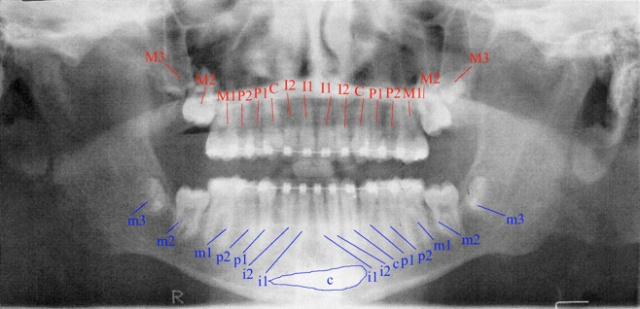 The improvement is remarkable. The deciduous teeth are all gone, and the spacing is a little better. The third molars are more developed, but it appears they’ll be impacted and eventually need to be removed. With the extra space, three of the canines have been able to grow in normally. Unfortunately, that lower right canine has actually gotten worse. It’s now in a position where it can cause damage to the nerves and vessels supplying all the lower incisors and the other canine, and will have to be removed through fairly invasive surgery. Tim will be having that surgery this week, and I’ve decided to take off Wednesday and Thursday while he recovers.Of course, with a missing tooth Tim could eventually have occlusion problems which could cause rapid and abnormal wear on his teeth, like what happened to the Rappahannock River sperm whale (note the massive wear facets on the two teeth on the right):
The improvement is remarkable. The deciduous teeth are all gone, and the spacing is a little better. The third molars are more developed, but it appears they’ll be impacted and eventually need to be removed. With the extra space, three of the canines have been able to grow in normally. Unfortunately, that lower right canine has actually gotten worse. It’s now in a position where it can cause damage to the nerves and vessels supplying all the lower incisors and the other canine, and will have to be removed through fairly invasive surgery. Tim will be having that surgery this week, and I’ve decided to take off Wednesday and Thursday while he recovers.Of course, with a missing tooth Tim could eventually have occlusion problems which could cause rapid and abnormal wear on his teeth, like what happened to the Rappahannock River sperm whale (note the massive wear facets on the two teeth on the right):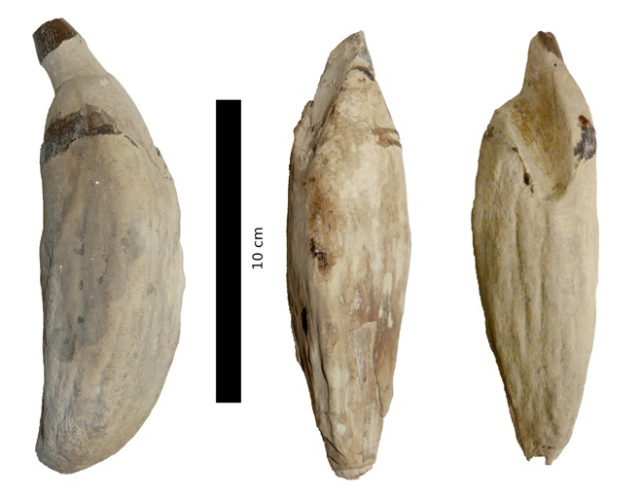 To avoid this problem, Tim’s braces have been used to open a gap between the right i2 and p1 (not visible in these photos), where the canine should be. An artificial tooth will fill this gap, to help ensure proper occlusion between his upper and lower teeth.Shortly after the original post was written, Tim successfully had the problematic canine removed.
To avoid this problem, Tim’s braces have been used to open a gap between the right i2 and p1 (not visible in these photos), where the canine should be. An artificial tooth will fill this gap, to help ensure proper occlusion between his upper and lower teeth.Shortly after the original post was written, Tim successfully had the problematic canine removed.
The role of museums
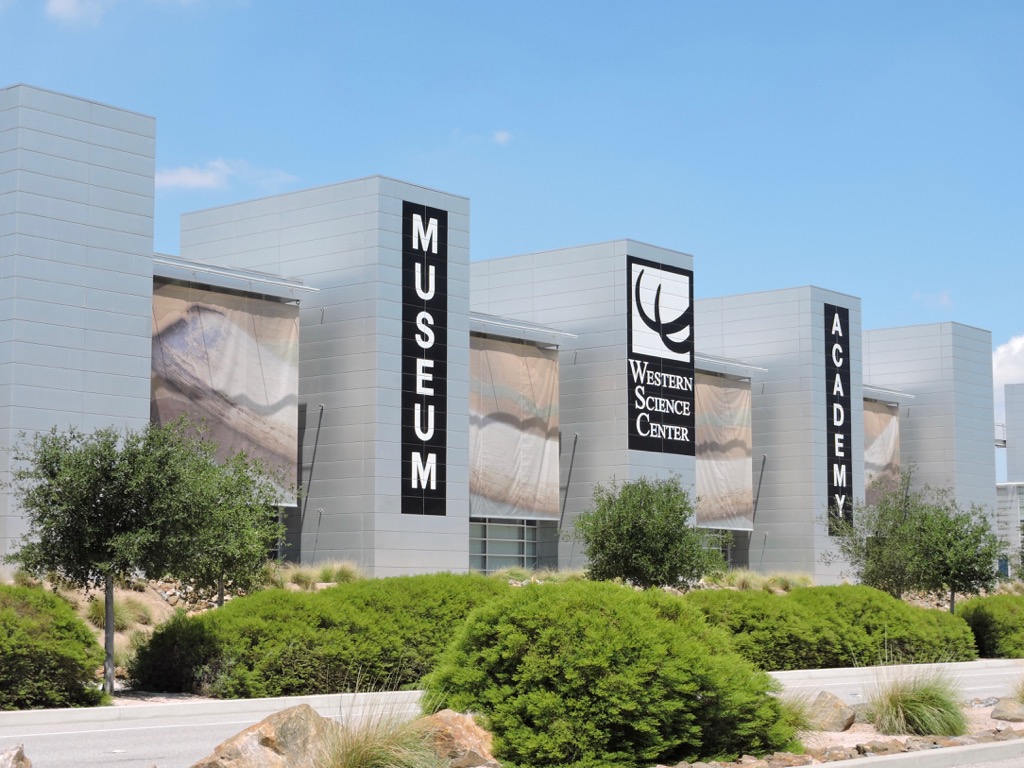 Inspired by Brian Switek’s recent article in Aeon, I was reminded of a post I wrote several years ago for “Updates from the Paleontology Lab” about different types of institutions that describe themselves with the term “museum”. What follows is an updated and edited version of that post.Over the course of my career I’ve had the opportunity to visit numerous natural history museums for a variety of reasons, as a researcher, a public lecturer, a tourist, and, of course, as an employee. The institutions are highly diverse in terms of their missions, and it’s instructive to reflect on those differences. The points I’m going to make are largely anecdotal, but should serve to give a general idea of the different types of natural history museums.During my time in Virginia, I made several visits to the Science Museum of Virginia (SMV), located in Richmond. SMV has a very large exhibit area and I was always impressed with the range and quality of hands-on interactives in their exhibits, but there were very few specimens on display.
Inspired by Brian Switek’s recent article in Aeon, I was reminded of a post I wrote several years ago for “Updates from the Paleontology Lab” about different types of institutions that describe themselves with the term “museum”. What follows is an updated and edited version of that post.Over the course of my career I’ve had the opportunity to visit numerous natural history museums for a variety of reasons, as a researcher, a public lecturer, a tourist, and, of course, as an employee. The institutions are highly diverse in terms of their missions, and it’s instructive to reflect on those differences. The points I’m going to make are largely anecdotal, but should serve to give a general idea of the different types of natural history museums.During my time in Virginia, I made several visits to the Science Museum of Virginia (SMV), located in Richmond. SMV has a very large exhibit area and I was always impressed with the range and quality of hands-on interactives in their exhibits, but there were very few specimens on display.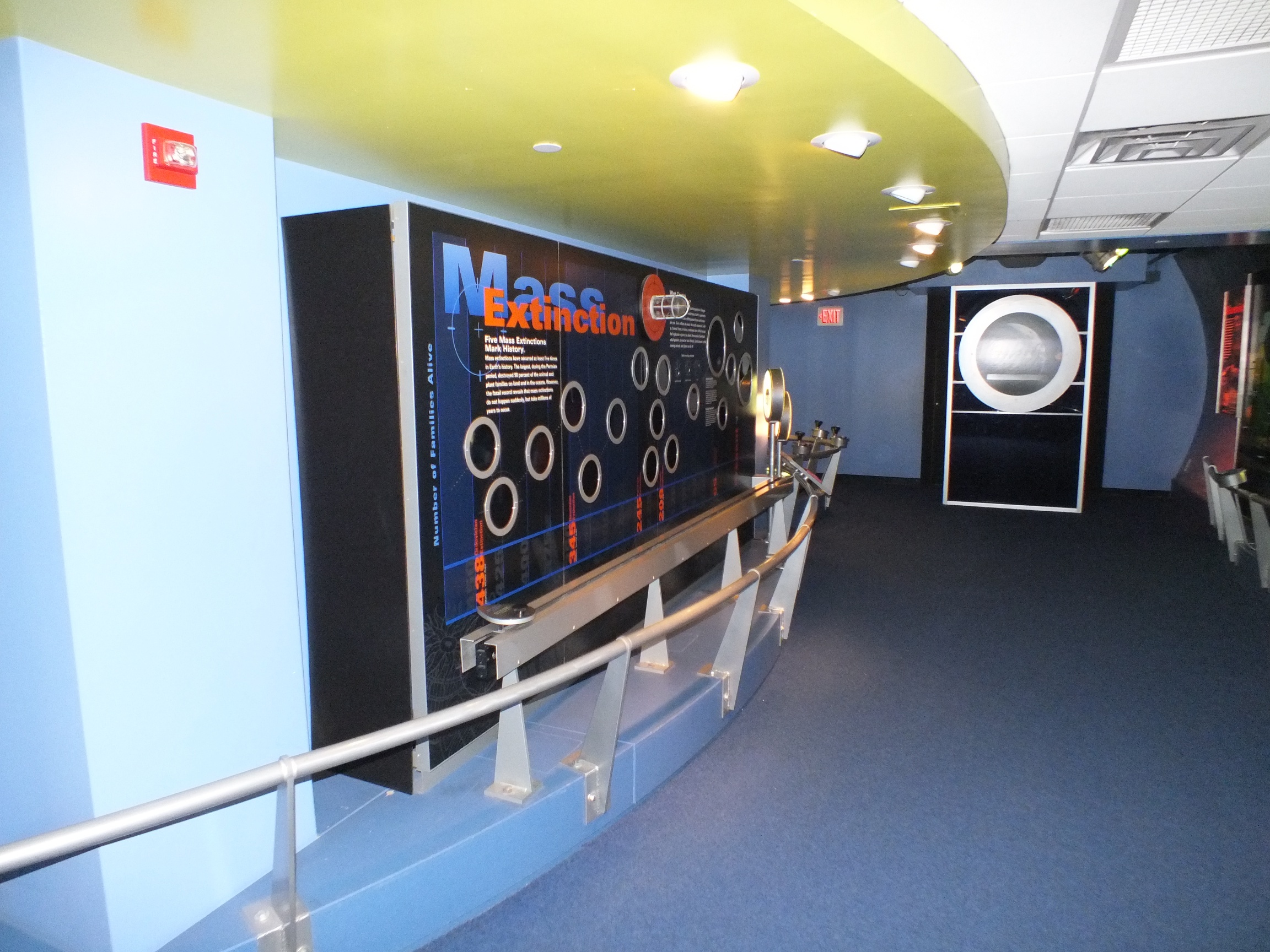 Extinction exhibit at the Science Museum of Virginia.SMV is an excellent example of a science education center. These institutions generally have few (if any) collections, and usually what collections they have are used in education rather than research. They are generally staffed by educators, with few if any active research scientists. The primary audiences are families with school-age children or schools themselves, especially elementary and middle schools, and this is reflected in the types of exhibits that are selected. This is not to say that adults can’t benefit or enjoy these exhibits - just that they are not the primary audience.A number of colleges have campus museums; two that I’ve visited recently are the Joseph Moore Museum at Earlham College and the Museum of Earth Science at Radford University. While it used to be fairly common for small colleges to maintain museums, they fell into disfavor in recent decades; fortunately they may be experiencing a bit of a renaissance.
Extinction exhibit at the Science Museum of Virginia.SMV is an excellent example of a science education center. These institutions generally have few (if any) collections, and usually what collections they have are used in education rather than research. They are generally staffed by educators, with few if any active research scientists. The primary audiences are families with school-age children or schools themselves, especially elementary and middle schools, and this is reflected in the types of exhibits that are selected. This is not to say that adults can’t benefit or enjoy these exhibits - just that they are not the primary audience.A number of colleges have campus museums; two that I’ve visited recently are the Joseph Moore Museum at Earlham College and the Museum of Earth Science at Radford University. While it used to be fairly common for small colleges to maintain museums, they fell into disfavor in recent decades; fortunately they may be experiencing a bit of a renaissance.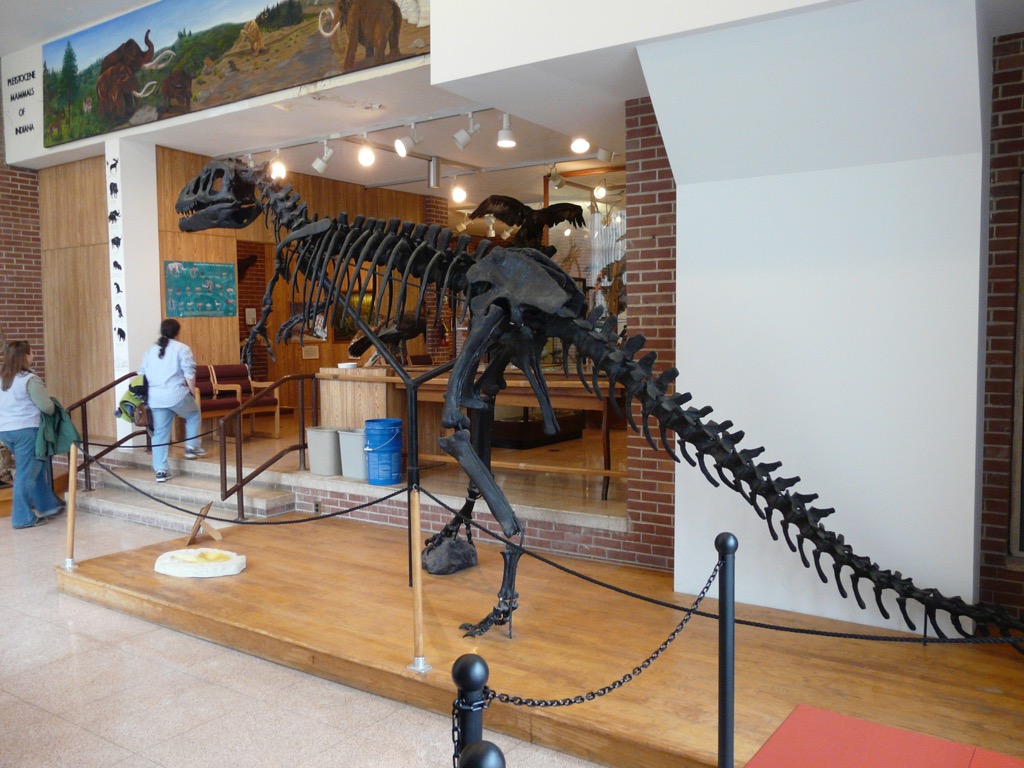 Allosaurus cast on display at the Joseph Moore Museum.Campus museums are almost as eclectic as the colleges that run them, but they do tend to have a few things in common. Collections at these museums are primarily for teaching (although there are exceptions; we’re including several Joseph Moore Museum specimens in the “Mastodons of Unusual Size” project). Most of these museum have few or no paid full-time staff, and often are run part-time by a faculty member. Most of the museums’ operational activities, including their programs, are conducted by students. Often these institutions serve as teaching museums, and are where many career museum professionals got their initial exposure to museum operations.
Allosaurus cast on display at the Joseph Moore Museum.Campus museums are almost as eclectic as the colleges that run them, but they do tend to have a few things in common. Collections at these museums are primarily for teaching (although there are exceptions; we’re including several Joseph Moore Museum specimens in the “Mastodons of Unusual Size” project). Most of these museum have few or no paid full-time staff, and often are run part-time by a faculty member. Most of the museums’ operational activities, including their programs, are conducted by students. Often these institutions serve as teaching museums, and are where many career museum professionals got their initial exposure to museum operations.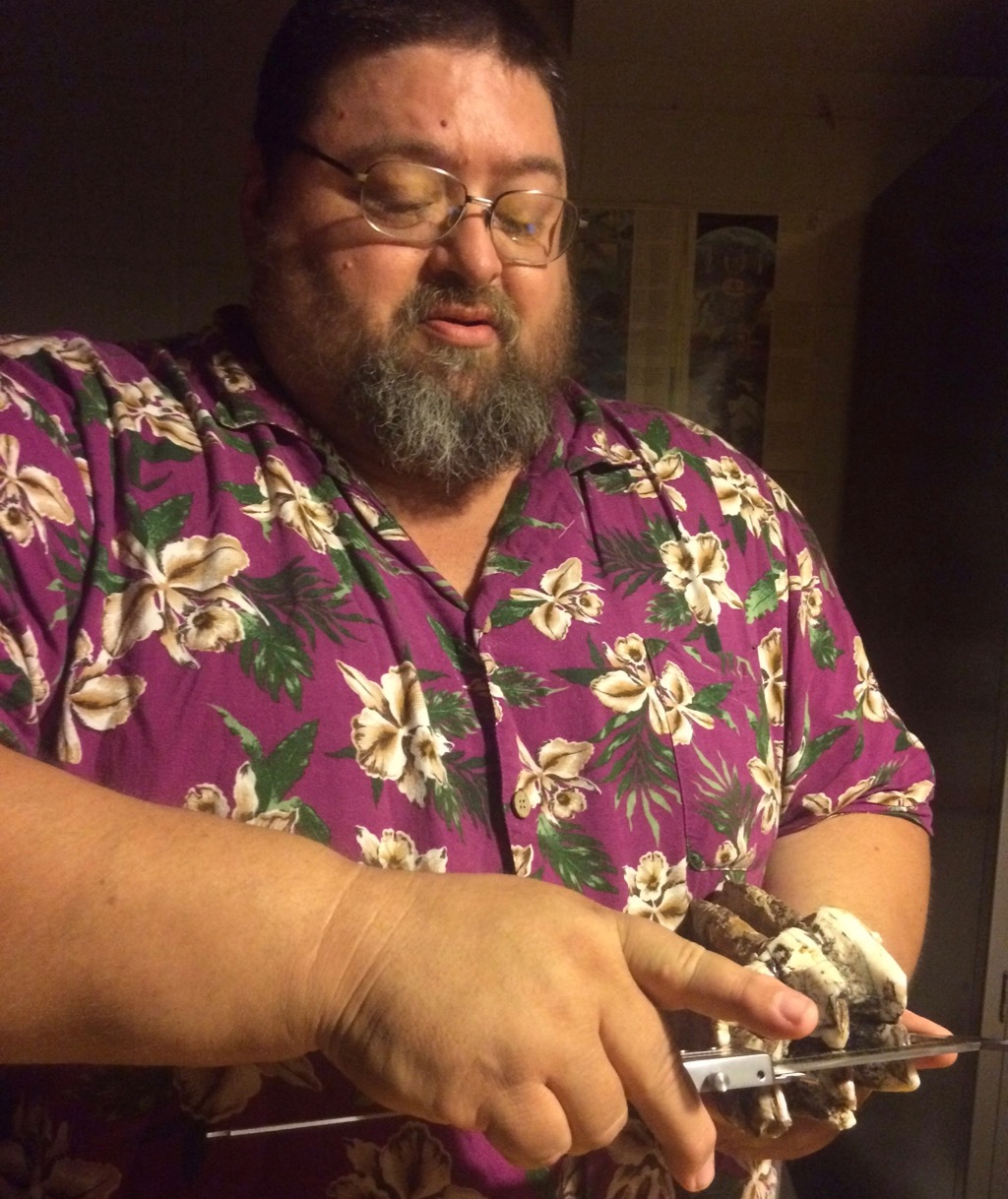 Collecting mastodon data at the Joseph Moore Museum.Finally, there are research museums such as the Western Science Center. Many research museums are operated by federal, state, or local governments (I previously worked at the Virginia Museum of Natural History, a state-funded research museum). Some, such as the Florida Museum of Natural History, are departments within research universities, which are also often state government-supported. A few, such as the American Museum of Natural History and Western Science Center, are stand-alone non-profit institutions operated in most cases by private foundations. While research museums may have different origins and associations, they all share a common feature: a permanent collection of research specimens. The primary function of these museums is to preserve the specimens and associated data that form the basis of natural science. These museums will usually have a written collections policy that defines the scope of the collection, how specimens are acquired, and how they are made available for study. The collections supersede any particular staff member; the curators and collections staff are there primarily there to support and maintain the collections, not the other way around.
Collecting mastodon data at the Joseph Moore Museum.Finally, there are research museums such as the Western Science Center. Many research museums are operated by federal, state, or local governments (I previously worked at the Virginia Museum of Natural History, a state-funded research museum). Some, such as the Florida Museum of Natural History, are departments within research universities, which are also often state government-supported. A few, such as the American Museum of Natural History and Western Science Center, are stand-alone non-profit institutions operated in most cases by private foundations. While research museums may have different origins and associations, they all share a common feature: a permanent collection of research specimens. The primary function of these museums is to preserve the specimens and associated data that form the basis of natural science. These museums will usually have a written collections policy that defines the scope of the collection, how specimens are acquired, and how they are made available for study. The collections supersede any particular staff member; the curators and collections staff are there primarily there to support and maintain the collections, not the other way around. 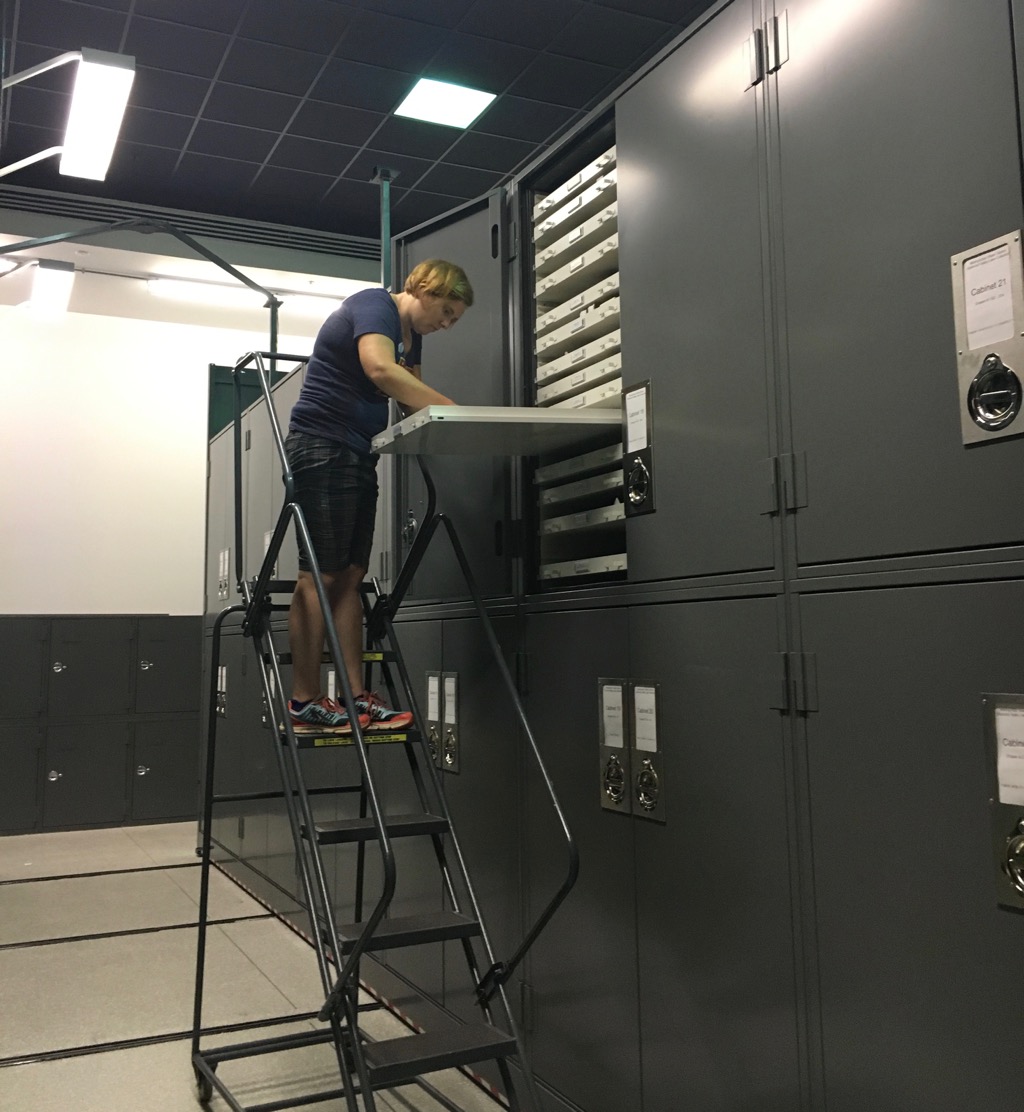 Dr. Katy Smith working in the collections repository at the Western Science Center.Specimens in a research collection are selected for their scientific value. Many of these specimens may be visually appealing, but that’s not the reason they’re acquired. In fact, the majority of a research museum’s collections are rarely if ever viewed by anyone except specialists who incorporate the data from those specimens into their research. In this respect, research museums stand apart from science education centers and teaching museums.Of course, these are broad categories that tend to merge into one another. Many museums have a close relationship with colleges, even if they aren't actually operated by a college. Some science education centers have small but significant research collections (the Boonshoft Museum of Discovery is a science education center where we collected mastodon data). Nearly all museums put a lot of effort into public education, regardless of their primary focus. Nevertheless, I'd suggest that most natural history museums tend to fall closest to one of these three categories.With such a range of missions and holdings, why are all these disparate institutions called museums? There is one feature that they all tend to share: exhibits. Even though the primary function of a research museum is maintaining collections, exhibits are a critical supporting part of that mission. To extend an analogy that a friend once suggested to me, why does a football stadium or a theatre have seats? Why do we have art galleries? All the players, actors, or artists require is a field, stage, or easel. The seats in a stadium or theatre are for everyone else – those who aren’t athletes or actors. The theatre, art gallery, and playing field are venues for non-specialists to experience these activities. Likewise, museums are the stages that scientists use to present their work to others. The vast majority of scientific research is funded, in one way or another, by the public. We have an obligation to make the fruits of our scientific endeavors available to as many people as we can, and particularly to those who pay for them.With exhibits serving as one of the significant public faces of research, it’s easy for the public to become misled about the function of museums and exhibits, particularly when the term “museum” is used for a variety of institutions. It can seem to a visitor that the only reason museums exist is to have exhibits. In the case of a science education center such as SMV, this is actually the case; they are an institution that exists to provide science education, primarily through exhibits. But the knowledge that’s imparted in SMV’s exhibits came from somewhere; someone had to collect and interpret the raw data that led to those discoveries. That was done in university and government research facilities…and in research museums. Institutions such as WSC don’t just provide the scientific knowledge described in our own exhibits, but also for the exhibits in other venues that don’t perform research or maintain collections. For research museums, we don’t acquire collections in order to supply the exhibits; rather, the exhibits exist to teach the public about the significance of our collections. All these different types of museums may share exhibits as a common point, but they perform different, yet complimentary, roles in the advancement of science.
Dr. Katy Smith working in the collections repository at the Western Science Center.Specimens in a research collection are selected for their scientific value. Many of these specimens may be visually appealing, but that’s not the reason they’re acquired. In fact, the majority of a research museum’s collections are rarely if ever viewed by anyone except specialists who incorporate the data from those specimens into their research. In this respect, research museums stand apart from science education centers and teaching museums.Of course, these are broad categories that tend to merge into one another. Many museums have a close relationship with colleges, even if they aren't actually operated by a college. Some science education centers have small but significant research collections (the Boonshoft Museum of Discovery is a science education center where we collected mastodon data). Nearly all museums put a lot of effort into public education, regardless of their primary focus. Nevertheless, I'd suggest that most natural history museums tend to fall closest to one of these three categories.With such a range of missions and holdings, why are all these disparate institutions called museums? There is one feature that they all tend to share: exhibits. Even though the primary function of a research museum is maintaining collections, exhibits are a critical supporting part of that mission. To extend an analogy that a friend once suggested to me, why does a football stadium or a theatre have seats? Why do we have art galleries? All the players, actors, or artists require is a field, stage, or easel. The seats in a stadium or theatre are for everyone else – those who aren’t athletes or actors. The theatre, art gallery, and playing field are venues for non-specialists to experience these activities. Likewise, museums are the stages that scientists use to present their work to others. The vast majority of scientific research is funded, in one way or another, by the public. We have an obligation to make the fruits of our scientific endeavors available to as many people as we can, and particularly to those who pay for them.With exhibits serving as one of the significant public faces of research, it’s easy for the public to become misled about the function of museums and exhibits, particularly when the term “museum” is used for a variety of institutions. It can seem to a visitor that the only reason museums exist is to have exhibits. In the case of a science education center such as SMV, this is actually the case; they are an institution that exists to provide science education, primarily through exhibits. But the knowledge that’s imparted in SMV’s exhibits came from somewhere; someone had to collect and interpret the raw data that led to those discoveries. That was done in university and government research facilities…and in research museums. Institutions such as WSC don’t just provide the scientific knowledge described in our own exhibits, but also for the exhibits in other venues that don’t perform research or maintain collections. For research museums, we don’t acquire collections in order to supply the exhibits; rather, the exhibits exist to teach the public about the significance of our collections. All these different types of museums may share exhibits as a common point, but they perform different, yet complimentary, roles in the advancement of science.
Fossil Friday - sloth vertebra
 One of the most enjoyable things about writing this blog is that I have the chance to learn about the anatomy of animals that are relatively unfamiliar to me. While I've done a little work on sloths in the past, their somewhat unusual skeletal anatomy can be tricky for someone who has mostly worked on other animals.Sloths and their relatives have unique articulation features (the xenarthrous processes) in their posterior thoracic and lumbar vertebrae. In order to understand these better, I asked Darla, the WSC Collections Manager, to search our collections database for lumbar vertebrae from our most common sloth, Paramylodon harlani. It turns out that, according to the database, we only have one reasonably well preserved Paramylodon lumbar that isn't already on exhibit, and she pulled that specimen out for me to examine. Shown above is the anterior view, and below is posterior:
One of the most enjoyable things about writing this blog is that I have the chance to learn about the anatomy of animals that are relatively unfamiliar to me. While I've done a little work on sloths in the past, their somewhat unusual skeletal anatomy can be tricky for someone who has mostly worked on other animals.Sloths and their relatives have unique articulation features (the xenarthrous processes) in their posterior thoracic and lumbar vertebrae. In order to understand these better, I asked Darla, the WSC Collections Manager, to search our collections database for lumbar vertebrae from our most common sloth, Paramylodon harlani. It turns out that, according to the database, we only have one reasonably well preserved Paramylodon lumbar that isn't already on exhibit, and she pulled that specimen out for me to examine. Shown above is the anterior view, and below is posterior: The vertebra isn't complete. The entire neural spine is missing, as are the posterior articular surfaces (the postzygopophyses), and there is damage to the centrum. The transverse processes are also broken off, as is more apparent in right lateral view:
The vertebra isn't complete. The entire neural spine is missing, as are the posterior articular surfaces (the postzygopophyses), and there is damage to the centrum. The transverse processes are also broken off, as is more apparent in right lateral view: In dorsal view (below) two big anterior troughs are visible. These would have articulated with the postzygopophyses of the vertebra in front of this one.
In dorsal view (below) two big anterior troughs are visible. These would have articulated with the postzygopophyses of the vertebra in front of this one. I struggled for some time trying to understand this vertebra. I was completely unable to locate the xenarthrous processes, and the transverse processes made no sense when I compared this specimen to a cast Paramylodon lumbar vertebra. After spending some time with references, especially Stock (1925), I figured out why I was having such difficulties; the vertebra is not a lumbar, but is in fact a caudal (tail) vertebra that was misidentified on the label! This is pretty easy to spot when compared to dorsal view figures of Paramylodon caudals from Stock:
I struggled for some time trying to understand this vertebra. I was completely unable to locate the xenarthrous processes, and the transverse processes made no sense when I compared this specimen to a cast Paramylodon lumbar vertebra. After spending some time with references, especially Stock (1925), I figured out why I was having such difficulties; the vertebra is not a lumbar, but is in fact a caudal (tail) vertebra that was misidentified on the label! This is pretty easy to spot when compared to dorsal view figures of Paramylodon caudals from Stock: To my chagrin, once I finally realized this was a caudal vertebra, I saw that there were plenty of indicators I had overlooked (like articulations for the haemal arches) that should have told me right away that this was a caudal. But starting with the assumption that it was a lumbar made it slower for me to to recognize contrary data for what it was.I should also note that, while misidentifications do occasionally slip into databases, or even publications (I've done that too!), it's not as common as you might think. The Diamond Valley Lake collections are, in my opinion, extremely well identified. I've now looked in some detail at more than a thousand different bones and teeth in the DVL collection. This vertebra is only the third instance in which I've disagreed with the initial identification. There have also been at least four other instances where I thought there was a misidentification, but closer examination convinced me that the original ID was correct. This constant reevaluation and self-correction is at the core of scientific methodology, and is what makes it such a powerful tool for understanding the world.Reference:Stock, C. 1925. Cenozoic Gravigrade Edentates of Western North America with Special Reference to the Pleistocene Megalonychinae and Mylodontidae of Rancho La Brea. Carnegie Institute of Washington Publication 331, 206 p., 47 pls.
To my chagrin, once I finally realized this was a caudal vertebra, I saw that there were plenty of indicators I had overlooked (like articulations for the haemal arches) that should have told me right away that this was a caudal. But starting with the assumption that it was a lumbar made it slower for me to to recognize contrary data for what it was.I should also note that, while misidentifications do occasionally slip into databases, or even publications (I've done that too!), it's not as common as you might think. The Diamond Valley Lake collections are, in my opinion, extremely well identified. I've now looked in some detail at more than a thousand different bones and teeth in the DVL collection. This vertebra is only the third instance in which I've disagreed with the initial identification. There have also been at least four other instances where I thought there was a misidentification, but closer examination convinced me that the original ID was correct. This constant reevaluation and self-correction is at the core of scientific methodology, and is what makes it such a powerful tool for understanding the world.Reference:Stock, C. 1925. Cenozoic Gravigrade Edentates of Western North America with Special Reference to the Pleistocene Megalonychinae and Mylodontidae of Rancho La Brea. Carnegie Institute of Washington Publication 331, 206 p., 47 pls.
Western Science Center theropod invasion?
 I arrived at work this morning to find what appeared to be several muddy tracks in the museum parking lot. While they weren't arranged in an organized trackway, they were numerous.
I arrived at work this morning to find what appeared to be several muddy tracks in the museum parking lot. While they weren't arranged in an organized trackway, they were numerous.  These look a lot like small theropod dinosaur tracks, complete with claw impressions, such as this one from Dinosaur State Park in Connecticut:
These look a lot like small theropod dinosaur tracks, complete with claw impressions, such as this one from Dinosaur State Park in Connecticut: Of course, my first thought was that the museum was under attack from a pack of angry, ravenous theropod dinosaurs, presumably seeking revenge for my disparaging comments about the Jurassic World "Velociraptors". Upon further reflection and observation, it turned out that there was a more mundane explanation. The museum has several sweetgum trees around the parking lot. These leaves are generally five-pointed (below), but when the leaves fall and dry out in the sun the edges tend to curl up.
Of course, my first thought was that the museum was under attack from a pack of angry, ravenous theropod dinosaurs, presumably seeking revenge for my disparaging comments about the Jurassic World "Velociraptors". Upon further reflection and observation, it turned out that there was a more mundane explanation. The museum has several sweetgum trees around the parking lot. These leaves are generally five-pointed (below), but when the leaves fall and dry out in the sun the edges tend to curl up. We've actually had a little rain in Hemet the last few days, and the ground is a bit muddy. The leaves apparently got muddy on one side, then blew into the parking lot overnight. Then, before morning, the leaves blew away, leaving a three-point mud outline (the curled-up lateral portions of the leaves apparently didn't touch the ground).As a result, I was able to make it safely to my office, free of any Velociraptor-related unpleasantness.
We've actually had a little rain in Hemet the last few days, and the ground is a bit muddy. The leaves apparently got muddy on one side, then blew into the parking lot overnight. Then, before morning, the leaves blew away, leaving a three-point mud outline (the curled-up lateral portions of the leaves apparently didn't touch the ground).As a result, I was able to make it safely to my office, free of any Velociraptor-related unpleasantness.
On animal cognition
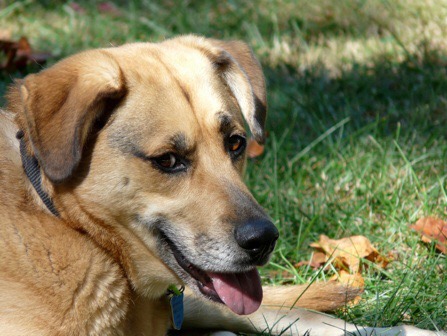 Inspired by Roy Mason's lecture at WSC last Thursday I decided to republish this post from my old blog. This was originally published at my old blog, "Updates from the Paleontology Lab" on April 6, 2011 under the title "And now for something a little different...". It seems that one of my dogs, Molly, doesn’t like large animals. I’m not sure why this should be the case, since she’s pretty much never been around any large animals except the deer that occasionally wander into our backyard. But if she spots a deer, horse, or some other large animal in the distance it generally results in a fit of barking and growling that is completely different from her normal demeanor.This behavior might seem a little out of character for Molly, but it’s not really surprising as it seems to be pretty commonplace in domestic dogs. But what I did find surprising was that Molly went into her aggressive, anti-large animal mode when she saw this:
Inspired by Roy Mason's lecture at WSC last Thursday I decided to republish this post from my old blog. This was originally published at my old blog, "Updates from the Paleontology Lab" on April 6, 2011 under the title "And now for something a little different...". It seems that one of my dogs, Molly, doesn’t like large animals. I’m not sure why this should be the case, since she’s pretty much never been around any large animals except the deer that occasionally wander into our backyard. But if she spots a deer, horse, or some other large animal in the distance it generally results in a fit of barking and growling that is completely different from her normal demeanor.This behavior might seem a little out of character for Molly, but it’s not really surprising as it seems to be pretty commonplace in domestic dogs. But what I did find surprising was that Molly went into her aggressive, anti-large animal mode when she saw this:
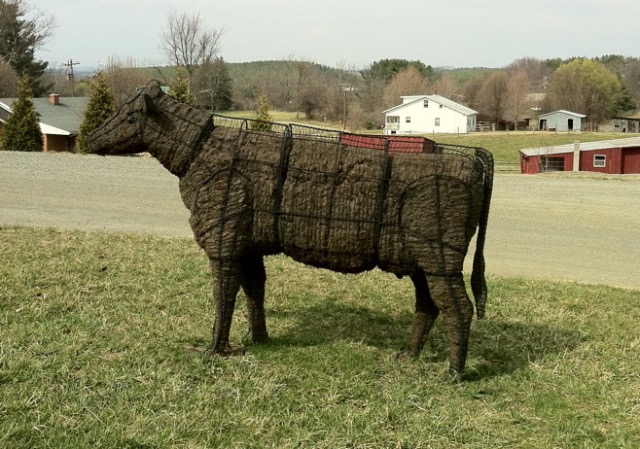 Now, when we look at this we immediately think “cow”, and apparently so does Molly (or at least whatever the dog word is for “cow”). But if you really look at this, it's pretty stylized for a cow. While we think “cow” we know it’s not a real cow. But how do we know? What features are we looking at that tell us “fake cow” instead of “real cow”? Maybe it’s the wire frame, or the incorrect texture, or these and other things besides. So maybe our subconscious thought process goes something like this (and I’m just generalizing here, so don’t nitpick too much):head + ears + long body + four legs + tufted tail + cow size = cow(cow) + wire frame + non-furry texture = fake cowWhy is this interesting? Because Molly clearly wasn’t getting the “fake cow” message. She sees some feature or combination of features and thinks “cow” and ignores the features we see that tell us “fake cow”. Dogs have good eyesight, so Molly should be able to see things like the wire frame; she just doesn’t recognize the significance of those things. So her brain is taking in a subset of the data available to it, and using that subset to identify “cow”.When Molly initially saw the cow, she was in the car with the windows up. As we pulled up next to the cow, we rolled down the window, and she sniffed. Then she stopped barking and pretty much ignored the cow. So Molly’s identification process may go like this:head + ears + long body + four legs + tufted tail + cow size = cow(cow) + non-cow smell = fake cowBut she didn’t rely on the smell to make her initial identification, so presumably either of these pathways work for her:head + ears + long body + four legs + tufted tail + cow size = cowhead + ears + long body + four legs + tufted tail + cow size + cow smell = cowIt’s also interesting that the absence of a cow smell (and presence of whatever she did smell) was enough to override all her prior interpretations based on what she could see. She seems to be weighting some observations more heavily than others.In fact, her whole process seems to have a familiar pattern:Hypothesis: Based on visual observations, I think that’s a cow. If it is a cow, it should smell like a cow. (Null hypothesis: It’s not a cow.)Procedure: Sniff to see if it smells like a cow.Result: It doesn’t smell like a cow.Conclusion: It’s not a cow (the null hypothesis is not rejected).My dog is a scientist!There is one more interesting observation concerning Molly; the cow is not the first time she’s had this kind of reaction to a life-size animal model. A few years ago, she showed the same reaction to this:
Now, when we look at this we immediately think “cow”, and apparently so does Molly (or at least whatever the dog word is for “cow”). But if you really look at this, it's pretty stylized for a cow. While we think “cow” we know it’s not a real cow. But how do we know? What features are we looking at that tell us “fake cow” instead of “real cow”? Maybe it’s the wire frame, or the incorrect texture, or these and other things besides. So maybe our subconscious thought process goes something like this (and I’m just generalizing here, so don’t nitpick too much):head + ears + long body + four legs + tufted tail + cow size = cow(cow) + wire frame + non-furry texture = fake cowWhy is this interesting? Because Molly clearly wasn’t getting the “fake cow” message. She sees some feature or combination of features and thinks “cow” and ignores the features we see that tell us “fake cow”. Dogs have good eyesight, so Molly should be able to see things like the wire frame; she just doesn’t recognize the significance of those things. So her brain is taking in a subset of the data available to it, and using that subset to identify “cow”.When Molly initially saw the cow, she was in the car with the windows up. As we pulled up next to the cow, we rolled down the window, and she sniffed. Then she stopped barking and pretty much ignored the cow. So Molly’s identification process may go like this:head + ears + long body + four legs + tufted tail + cow size = cow(cow) + non-cow smell = fake cowBut she didn’t rely on the smell to make her initial identification, so presumably either of these pathways work for her:head + ears + long body + four legs + tufted tail + cow size = cowhead + ears + long body + four legs + tufted tail + cow size + cow smell = cowIt’s also interesting that the absence of a cow smell (and presence of whatever she did smell) was enough to override all her prior interpretations based on what she could see. She seems to be weighting some observations more heavily than others.In fact, her whole process seems to have a familiar pattern:Hypothesis: Based on visual observations, I think that’s a cow. If it is a cow, it should smell like a cow. (Null hypothesis: It’s not a cow.)Procedure: Sniff to see if it smells like a cow.Result: It doesn’t smell like a cow.Conclusion: It’s not a cow (the null hypothesis is not rejected).My dog is a scientist!There is one more interesting observation concerning Molly; the cow is not the first time she’s had this kind of reaction to a life-size animal model. A few years ago, she showed the same reaction to this:
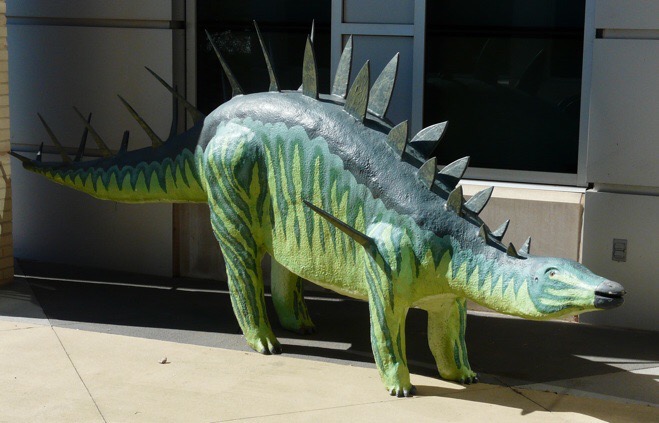 I very seriously doubt that there’s a dog word for Kentrosaurus. And yet something that Molly sees here triggers at least a “big animal” reaction, and it overrides all the (to her) unfamiliar features of a dinosaur. So what are the critical features that tell Molly that this is an animal? I have no idea, but it would be interesting to find out.OK, I admit this really doesn’t have much to do with paleontology or geology. But it’s still intriguing to think about the implications of observations like this for cognition and sensory perception.
I very seriously doubt that there’s a dog word for Kentrosaurus. And yet something that Molly sees here triggers at least a “big animal” reaction, and it overrides all the (to her) unfamiliar features of a dinosaur. So what are the critical features that tell Molly that this is an animal? I have no idea, but it would be interesting to find out.OK, I admit this really doesn’t have much to do with paleontology or geology. But it’s still intriguing to think about the implications of observations like this for cognition and sensory perception.

